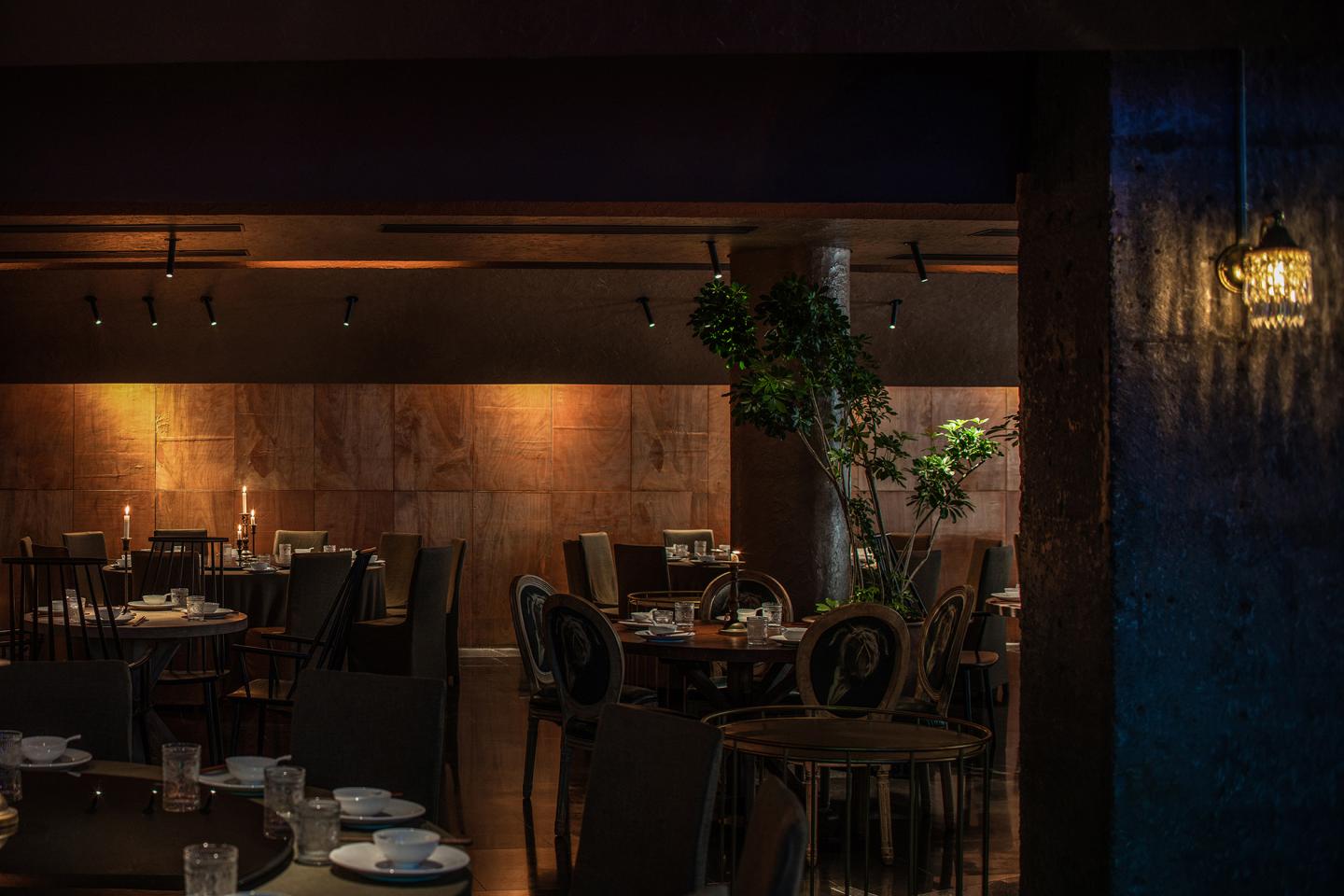Antoni Tapies, one of the greatest Spanish artists after Antonio Gaudi and Pablo Ruiz Picasso, and the founder of Art Informel material painting, once said,
Like a researcher in his laboratory, I am the first spectator of the suggestions drawn from the materials. I unleash their expressive possibilities, even if I do not have a very clear idea of what I am going to do. As I go along with my work, I formulate my thought, and from this struggle between what I want and the reality of the material - from this tension - is born an equilibrium.
Antoni Tapies enabled materials to proclaim their own significance independently, and turned "humble materials" into works of art, taking on a mysterious and sublime radiance.
Inspired by Antoni Tapies, our respect for materials has turned into the springboard nurturing imagination in the design of the Shark Restaurant. Although whatever they really are like, base materials shall be decorated with surface materials, as such a humble positioning of base materials has become the starting point of the design rules and the industry consensus. However, we still decide to respect the original appearance of the base materials and release their expressive forces and, from art to reality, practically integrate the materials and the space, to create a purer and environmentally friendly space. Therefore, environmentally friendly putty and flame retardant plywood, two base materials, are chosen to shape the whole space.
The full adoption of the "base materials" will create barbaric primitive beauty for the space. In view of the disadvantage of insufficient lighting in the project, we incorporate the design concept of "cave" into the space. We remove the only French window for lighting to make a small rose garden, blurring the inner and outer boundary of the "cave", and letting the sunlight and breeze bathe the hall through the garden and the tables by the window.
2021
2021
The walls and ceiling of the hall abandon the surface coating. Instead, the durable putty is applied in a delicate technique, in which a process embeds rich textures to directly expose the original look. This not only respects the materials but also creates a unique texture of the "cave". In terms of color, natural mineral pigments are used to contrast the garden soil and turn the putty into the color of the earth. As the pigment oxidizes, there gradually grows colors that we cannot design accurately.
The cement structure columns jack up three sections of huge earth-colored arc canopy which, like cave fragments loaded into the building, wrap up the whole hall and a 20-meter-long giant fish tank. Lush green plants embrace the dining tables of diversified shapes and materials. Deliberately set lights and jumping candle flames let the dim, indolent undersea cave tree shadows interweave with the warmth. Coming to the private rooms deep in the cave without natural lighting along the foot traffic, we may see the 2,000k color temperature light shines on the rough, dark earthy walls and ceiling, like dim fire mirrored from the furnace, creating an implicit beauty of the light and shade.
Flame retardant plywood, another base material, has excellent fire resistance, chemical stability and aging resistance. This time, we decide to respect all the wild, imperfect and yet touching patterns of the plate that has been neglected a million times. For each carefully selected flame retardant plywood, we no longer cover it up with other perfect or expensive surface materials. As we move along, we can clearly see the ever-changing patterns emit beautiful luster of flowing light and color in the warm care of the wood wax oil and warm yellow lights.
The two base materials shape the entire space. They simplify the process, and reduce manpower, time, and production cost. The fancy fish tank, golden hanging painting, delicate crystal lamp, and elegant bronze candlestick have really become perfect partners of the "humble materials". They are the best proof that all materials deserve to be respected and treated equally, and a beneficial attempt to make "humble materials" no longer ignoble.
Design Directors: Huiying Qu, Xu Ran, Guiping Que,
Design Team: Defeng Yang, Wenxuan Tian, Honglin Pi
Favorited 1 times











